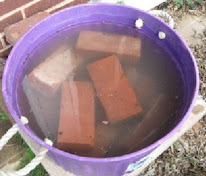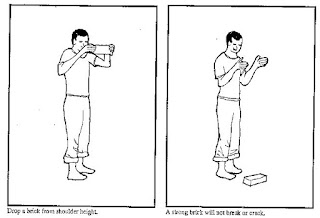All Types of Lab Tests on Bricks for Building Construction Works
Tests on Bricks
To
know the quality of bricks following 7 tests can be performed. In these tests
some are performed in laboratory and the rest are on field.
• Compressive strength test
• Water Absorption test
• Efflorescence test
• Hardness test
• Size, Shape and Colour
test
• Soundness test
• Structure test
Compressive strength test: This test is done to know the compressive strength of
brick. It is also called crushing strength of brick. Generally 5 specimens of
bricks are taken to laboratory for testing and tested one by one. In this test
a brick specimen is put on crushing machine and applied pressure till it
breaks. The ultimate pressure at which brick is crushed is taken into account.
All five brick specimens are tested one by one and average result is taken as
brick’s compressive/crushing strength.
Water Absorption test: In this test bricks are weighed in dry condition and let them immersed in fresh water for 24 hours. After 24 hours of immersion those are taken out from water and wipe out with cloth. Then brick is weighed in wet condition. The difference between weights is the water absorbed by brick. The percentage of water absorption is then calculated.The less water absorbed by brick the greater its quality. Good quality brickdoesn’t absorb more than 20% water of its own weight.
Efflorescence test: The presence of alkalies in bricks is harmful and they
form a grey or white layer on brick surface by absorbing moisture. To find out
the presence of alkalis in bricks this test is performed. In this test a brick
is immersed in fresh water for 24 hours and then it’s taken out from water and
allowed to dry in shade.If the whitish layer is not visible on surface it
proofs that absence of alkalis in brick. If the whitish layer visible about 10%
of brick surface then the presence of alkalis is in acceptable range. If that
is about 50% of surface then it is moderate. If the alkalies’ presence is over
50% then the brick is severely affected by alkalies.
Hardness test: In this test a scratch is made on brick surface with a
hard thing. If that doesn’t left any impression on brick then that is good
quality brick.
Size, shape and colour test: In this test randomly collected 20 bricks are staked
along lengthwise, width wise and height wise and then those are measured to
know the variation of sizes as per standard. Bricks are closely viewed to check
if its edges are sharp and straight and uniform in shape. A good quality brick
should have bright and uniform colour throughout.
Soundness test: In this test two bricks are held by both hands and
struck with one another. If the bricks give clear metallic ringing sound and
don’t break then those are good quality bricks.
Structure test: In this test a brick is broken or a broken brick is
collected and closely observed. If there are any flows, cracks or holes present
on that broken face then that isn’t good quality brick.
Read more:
Classification of Bricks as per common practice and as per constituent materials
Hand moulding,ground moulding and machine moulding of bricks
Constituents of good and Harmful Ingredients in Brick













No comments:
Post a Comment
If you are getting more information from civilengineerfriend page please give your comments. Share the page information in your whatsapp group. Subscribe our page to get more information.